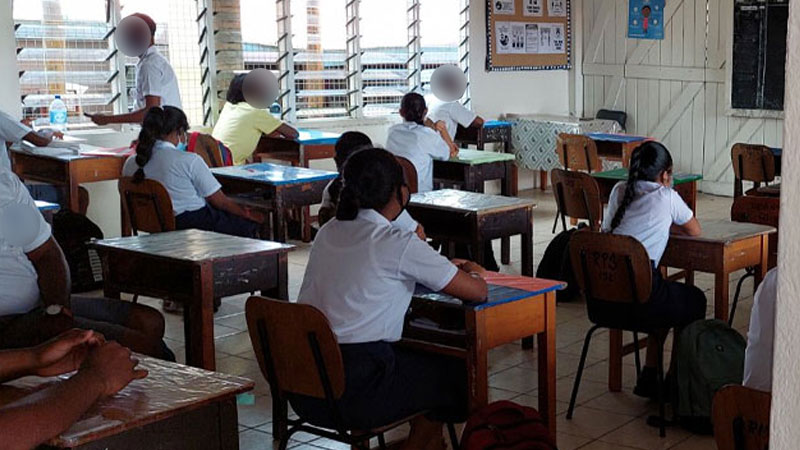
Key stakeholders are coming up with solutions in the Ministry of Education organised National Education Summit to deal with the critical issues in the education sector which include literacy and numeracy challenges, dropouts, high fail levels in Year 8, high fail levels in Science, Technology, Engineering and Maths subjects and children with disabilities having lowest learning achievement.
While speaking at the summit at the Sheraton in Denarau, Permanent Secretary for Education, Selina Kuruleca has discussed the low learning levels in early years and failure, and dropout risks.
37 percent of children do not pass in Year 8 examinations and approximately 20 percent of children dropout by Year 12.
She says 31 percent of boys dropout between Year 8 to 12 while 9 percent girls dropout between the same year levels.
For rural children, 39 percent of rural children dropout between Year 8 to 12 while 6 percent of urban children dropout between Year 8 to 12.
Boys and Rural children also score lower on the Literacy and Numeracy Assessment tests.
It has been highlighted that 18 percent of more females pass year 8 examinations as compared to males; and 10 percent of more urban children pass year 8 examination as compared to rural.
There is 36.5 percent poverty rate in rural areas which house 67.9 percent of all poor based on the last Fiji Bureau of Statistics report while there is 14 percent poverty rate in urban areas.
With the dropout figures being quoted at the summit, the term dropout used is the difference between students appearing in Year 8 examinations in 2018 and Year 12 in 2022.
The Education Ministry says technically these children have been attending school, some may have migrated to private schools and others to short term TVET or tertiary courses.
It has been highlighted that 99 percent of the children complete primary education, approximately 20 percent children ‘dropout’ between Year 8 and 12, for pre school years 81 percent of the children aged 3 to 4 years are developmentally on track, and for Early Childhood Education 22 percent of children aged 3 to 4 years attend 1 year of pre-primary.
According to the presentation to find solutions in the summit, 14.5 percent of children in primary school fall in the critical category in literacy and 23 percent in numeracy.
Child centred approaches are being discussed to identify issues, causes and solutions.
The theme of the summit is transforming our education system: building and supporting resilient Fijians and the aim is to transform Fiji’s education system to enhance the learning outcomes and well-being of all Fijians, particularly the younger generation as they transition each level of the education system.
Kuruleca says the COVID 19 pandemic has brought in new challenges and exaggerated old challenges to the way in which education is delivered eliciting the wide gap in access to newer technologies as a tool for learning and therefore creating issues of equity in learning opportunities and access.
The summit’s objectives are to provide an opportunity to mobilize greater political ambition, commitment, and action through an Education Sector Analysis of Fiji’s education system, appreciate the current status of education in the country and provide the evidence for decisions to determine the future directions for education development thus accelerating progress on education and explore relevant and appropriate policy ambitions, actions and solutions to transform Fiji’s education system to meet the needs and aspirations of all Fijians, aligned to regional and global commitments through to 2030 and beyond.
The summit ends today.
Stay tuned for the latest news on our radio stations


